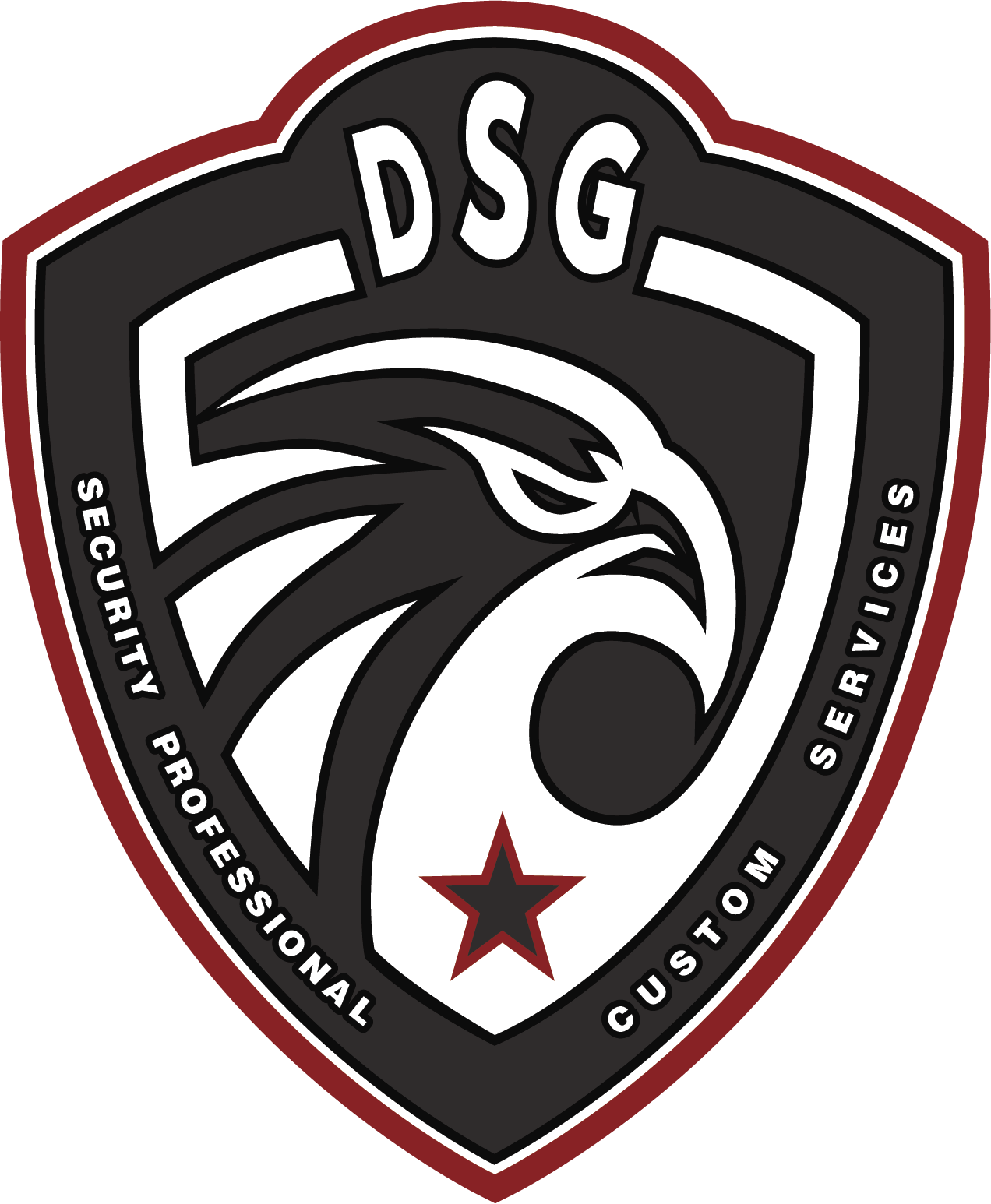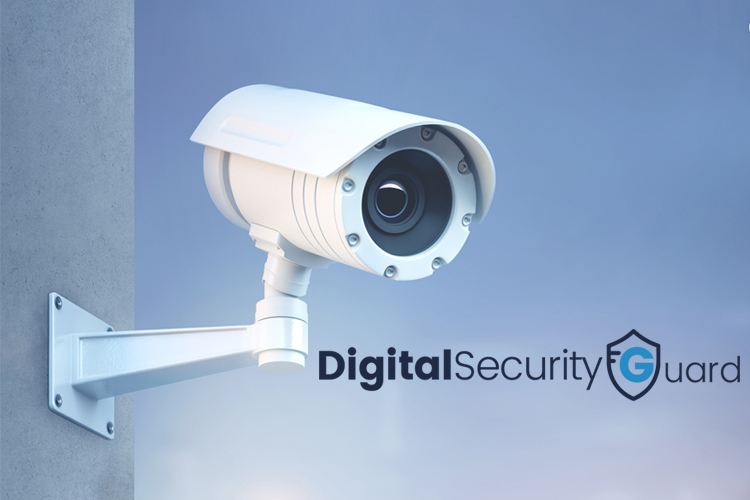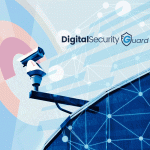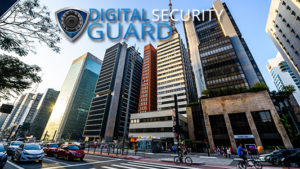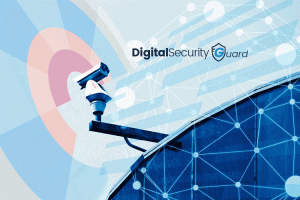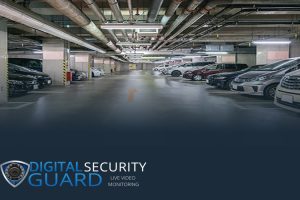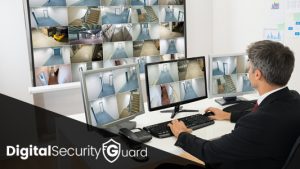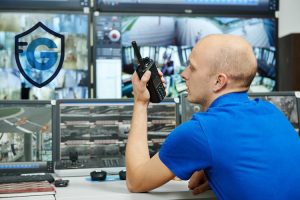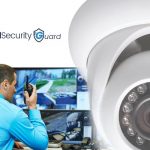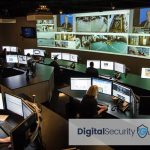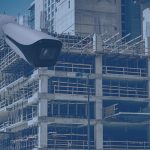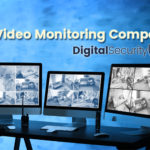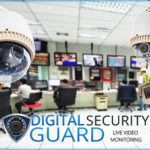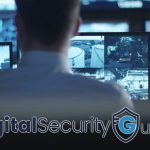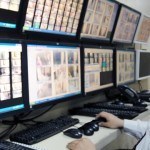Property managers and HOA decision-makers face an increasingly challenging security landscape with remote video security services for residential properties becoming an essential solution. Apartments have 85% higher burglary rates than single-family homes, while package theft affects 36% of Americans annually. Meanwhile, traditional security costs continue rising, with on-site guards costing upwards of $150,000 annually per position, while their effectiveness often falls short of expectations.
For residential property owners, HOA boards, and apartment building managers, the challenge is clear: how do you provide comprehensive, 24/7 security coverage that residents demand while staying within budget constraints that boards will approve?
The answer lies in modern remote video security services—a technology-enabled solution that combines professional human monitoring with advanced camera systems to deliver superior security coverage at a fraction of traditional costs. This comprehensive guide will walk you through everything you need to know about implementing remote video security for your residential property, from understanding the technology to calculating ROI and choosing the right provider.
Understanding Remote Video Security Services for Residential Properties
What Are Remote Video Security Services?
Remote video security services represent a fundamental shift from passive surveillance to active security monitoring. Unlike traditional CCTV systems that simply record events for later review, remote video monitoring services employ licensed security professionals who actively watch your property cameras in real-time, 24 hours a day, 365 days a year.
The key difference is human oversight combined with immediate response capability. When a security professional detects suspicious activity, they can intervene immediately through two-way audio communication, contact law enforcement with video verification, and coordinate with on-site personnel—all within seconds of an incident occurring.
How Remote Monitoring Works
Professional remote video security operates through a sophisticated integration of technology and human expertise. HD cameras strategically placed throughout your property transmit live video feeds to a centralized monitoring center staffed by licensed security guards. These professionals use advanced analytics tools to identify potential threats while applying human judgment to distinguish between normal activity and genuine security concerns.
When an incident is detected, the monitoring team can take immediate action: issue verbal warnings through two-way audio systems, contact law enforcement with real-time video evidence, alert property management, and maintain visual contact with the situation until it’s resolved. This proactive approach prevents crimes rather than simply documenting them after the fact.
Types of Remote Video Security for Residential Properties
Virtual Gate Guard Services eliminate the need for expensive on-site personnel while maintaining strict access control. Remote security professionals can verify visitor credentials, grant or deny access, and maintain detailed logs of all entry activity.
Common Area Monitoring covers high-traffic zones like lobbies, mailrooms, parking areas, and recreational facilities. These areas often attract unauthorized visitors and criminal activity, making them prime candidates for professional monitoring.
Perimeter Security focuses on building exteriors and property boundaries, detecting intrusion attempts before they reach interior spaces. This early warning system allows for intervention while potential criminals are still outside the building.
Package Protection addresses the growing problem of delivery theft by monitoring package delivery areas and deterring thieves through visible camera presence and immediate response capability.
Key Benefits of Remote Video Security Services for Residential Properties
Cost Efficiency That Boards Can Approve
The most compelling advantage of remote video security services for residential properties is dramatic cost reduction. Traditional on-site security guards cost between $100,000-$150,000 annually per position, plus benefits, insurance, and management overhead. Multiple shifts required for 24/7 coverage can push total costs to $300,000 or more annually.
Remote video monitoring typically costs $15-50 per unit per month, representing 60-90% cost savings compared to traditional security methods. For a 100-unit apartment complex, this translates to annual savings of $100,000-$200,000 while actually improving security effectiveness.
These savings aren’t achieved by cutting corners—they result from operational efficiency. A single remote monitoring center can simultaneously watch multiple properties, eliminating the inefficiencies of individual guard posts while providing superior coverage through multiple cameras and professional oversight.
Enhanced Security Coverage
Remote video monitoring delivers continuous 24/7/365 coverage without the human limitations that affect traditional security. Guards don’t take breaks, call in sick, or get distracted by phones or personal conversations. They maintain consistent vigilance throughout their shifts and can monitor multiple camera feeds simultaneously.
Response times are dramatically improved, with professional security teams able to assess and respond to incidents within 30-60 seconds versus 5-15 minutes for mobile patrol services. More importantly, law enforcement receives video verification of incidents, which significantly improves response times and reduces false alarm penalties.
Resident Safety and Satisfaction
Modern residents increasingly view security as a basic amenity, similar to maintenance or landscaping. Remote video monitoring addresses multiple safety concerns that traditional security methods often miss:
Unauthorized Access Prevention through real-time visitor screening ensures that only authorized individuals enter the property. Virtual gate guards can verify credentials, communicate with residents, and maintain detailed access logs without the high costs of staffing guard houses.
Package Theft Reduction protects valuable deliveries in monitored areas. With 36% of Americans experiencing package theft, this protection directly impacts resident satisfaction and retention.
Emergency Response Coordination provides immediate law enforcement contact with video verification, reducing response times during critical incidents. This capability is particularly valuable for senior living communities and family residential areas.
Privacy Protection ensures monitoring focuses only on common areas while respecting resident privacy. Professional monitoring services operate under strict privacy guidelines and comply with relevant regulations.
Operational Advantages
Property managers benefit from simplified security operations without the complexities of employee management. There are no hiring challenges, scheduling conflicts, or staff turnover issues to manage. Security coverage scales easily across multiple properties without proportional increases in management overhead.
Weather independence means security coverage continues unaffected by storms, extreme temperatures, or other conditions that might impact traditional security personnel. The technology integration capabilities allow remote monitoring to work seamlessly with existing access control systems, building management platforms, and emergency response procedures.
Industry-Specific Applications
HOA Communities
HOA communities face unique security challenges that remote video monitoring addresses effectively. Budget-conscious residents often resist fee increases for security improvements, making cost-effective solutions essential for board approval.
Multiple access points in large communities are difficult to monitor with traditional methods, but remote monitoring can cover all entry points simultaneously. Guest access control becomes manageable through virtual gate guard services that verify visitors without expensive staffing.
Amenity area security for pools, clubhouses, and recreational facilities protects community investments while ensuring only authorized residents and guests use these spaces. Digital Security Guard’s residential security solutions are specifically designed to address these HOA-specific challenges while maintaining transparent, affordable pricing that residents can support.
Apartment Complexes
Apartment complexes experience 85% higher burglary rates than single-family homes, making security a critical factor in resident satisfaction and retention. High resident turnover creates ongoing access control challenges that traditional security methods struggle to address efficiently.
Package theft in delivery areas has become a major resident complaint, with some properties experiencing daily theft incidents. Remote monitoring of package delivery zones provides immediate deterrence while documenting any theft attempts for law enforcement.
Parking area security concerns affect resident satisfaction and safety perceptions. Professional monitoring of parking areas, combined with good lighting and clear camera coverage, dramatically reduces vehicle break-ins and creates a safer environment for residents.
Virtual concierge services provide professional visitor management without the high costs of staffing front desks around the clock. Remote security professionals can screen visitors, grant access to authorized individuals, and maintain detailed visitor logs for property management review.
Senior Living Communities
Senior living communities require enhanced security measures due to their vulnerable resident population and 24/7 operational requirements. Family members expect comprehensive security that protects their loved ones while respecting their independence and dignity.
Remote monitoring provides enhanced oversight for resident safety without being intrusive or institutional in appearance. Professional monitoring can coordinate with medical emergency services when incidents occur, providing immediate response that families value.
The ability to provide security updates to families when requested gives peace of mind while maintaining appropriate privacy boundaries. Professional monitoring exceeds the capabilities of basic alert systems while providing the human oversight that senior living requires.
Technology and Implementation
Core Technology Components
Camera Systems form the foundation of effective remote monitoring. Modern systems utilize 4K HD resolution that exceeds industry standards, providing clear images for positive identification and evidence collection. Night vision capabilities and weatherproof housing ensure consistent performance in all conditions.
Power over Ethernet (PoE) technology provides reliable connectivity and power through single cable runs, simplifying installation and reducing failure points. Strategic camera placement maximizes coverage while minimizing blind spots and installation costs.
Monitoring Infrastructure includes redundant internet connectivity with automatic failover to ensure continuous operation even during network outages. Local recording capabilities provide backup storage while cloud integration enables remote access and long-term archival.
Advanced analytics software helps identify potential security incidents while human verification eliminates false alarms. Mobile app access allows property managers to check live feeds and receive immediate notifications of any security events.
Communication Systems enable two-way audio for immediate intervention without physical presence. Direct law enforcement notification with video verification improves response times while detailed incident reporting helps property managers track security trends and make informed decisions.
Professional Installation Process
Site Assessment begins with a comprehensive security audit that identifies vulnerabilities and optimal camera placement locations. Technology infrastructure evaluation ensures adequate bandwidth and network capabilities for reliable operation.
Custom system design takes into account property layout, resident privacy concerns, and specific security priorities. Regulatory compliance review ensures all monitoring activities meet local and federal requirements for residential properties.
Professional Installation typically requires 1-3 days depending on property size and complexity. Installation teams work to minimize disruption to residents while ensuring optimal camera placement and system configuration.
Network setup and testing verify reliable operation before the system goes live. Integration with existing access control, building management, or emergency notification systems maximizes overall security effectiveness.
Training and Go-Live includes comprehensive property management team training on system operation and emergency procedures. A 30-day optimization period allows for adjustments based on initial experience and resident feedback.
System Requirements
Most residential properties can support remote video monitoring with minimal infrastructure upgrades. Minimum bandwidth requirements of 5-15 Mbps upload speed are well within the capabilities of modern internet connections.
Basic network infrastructure including routers and switches provides the foundation for camera connectivity. Power supply requirements are typically met through PoE switches or local power adapters depending on installation requirements.
Compatibility with most existing camera systems means properties with current CCTV installations can often upgrade to remote monitoring without completely replacing their camera infrastructure.
Cost Analysis and ROI
Traditional Security Cost Reality
On-site security guards represent a significant ongoing expense that many properties struggle to justify. Base salaries for security personnel range from $35,000-50,000 annually, with benefits and insurance adding 30-40% to total compensation costs.
Multiple shifts required for 24/7 coverage mean properties need 3-4 full-time guards to provide continuous security. Total annual costs often reach $140,000-280,000 when including supervisor oversight, training expenses, and workers’ compensation insurance.
Additional hidden costs include recruitment and training expenses for high turnover positions, equipment and uniform costs, and the management overhead required to supervise security staff effectively.
Remote Video Security Investment
Digital Security Guard’s remote monitoring services typically cost $40,000-80,000 annually for comprehensive coverage, representing immediate savings of 40-70% compared to traditional security methods.
Equipment costs of $15,000-30,000 represent a one-time investment that provides long-term value. Professional installation costs of $5,000-15,000 ensure optimal system performance and integration with existing infrastructure.
Total first-year investment of $60,000-125,000 includes all equipment, installation, and monitoring services, providing complete security coverage without ongoing personnel management responsibilities.
ROI Calculation and Additional Value
Annual savings of $80,000-155,000 provide a clear financial benefit that property managers can present to budget-conscious boards. The typical payback period of 12-18 months means properties begin realizing net savings quickly.
Additional value includes reduced insurance premiums, with many insurers offering 5-15% discounts for properties with professional monitoring systems. Decreased liability exposure through documented security procedures and immediate incident response provides long-term protection.
Improved property values through enhanced security features help attract and retain quality residents. Research shows that visible security measures can increase property values by 5-10% while improving resident satisfaction and retention rates.
Choosing the Right Provider
Service Quality Indicators
When evaluating remote video security services for residential properties, focus on verifiable service quality indicators rather than marketing promises. Licensed security professionals staffed 24/7 in monitoring centers ensure professional oversight rather than automated systems.
Response time guarantees under 60 seconds demonstrate a serious commitment to immediate incident response. Customer service accessibility through multiple channels shows dedication to ongoing support relationships.
Look for providers with verifiable uptime statistics and redundant monitoring capabilities. The best providers offer backup monitoring centers and automatic failover to ensure continuous coverage even during facility maintenance or emergencies.
Technology Standards That Matter
HD or 4K video quality ensures clear identification and evidence collection when needed. Redundant connectivity and backup systems prevent service interruptions that compromise security coverage.
Mobile access and real-time alert capabilities allow property managers to stay informed and respond appropriately to incidents. Integration capabilities with existing access control, fire safety, and building management systems maximize overall security effectiveness.
Avoid providers using outdated analog systems or those requiring proprietary cameras that limit future flexibility and increase long-term costs.
Pricing Transparency Requirements
Demand clear, all-inclusive monthly pricing without hidden fees or surprise charges. Setup fees, activation charges, and equipment rental costs should be clearly disclosed upfront.
Flexible contract terms allow properties to adjust service levels as needs change. Avoid providers requiring long-term contracts with early termination penalties that lock properties into unsuitable arrangements.
Scalable pricing for property size ensures you’re paying for the coverage you need rather than arbitrary minimum requirements that inflate costs unnecessarily.
Red Flags to Avoid
Pricing Issues include hidden fees and complex pricing structures that make true costs difficult to calculate. Long-term contracts with penalties often indicate providers who prioritize sales over service quality.
Bait-and-switch pricing tactics with low advertised rates followed by expensive add-ons demonstrate questionable business practices. Minimum camera requirements beyond your actual needs inflate costs without improving security effectiveness.
Service Limitations such as poor customer service response times indicate inadequate support infrastructure. Limited monitoring center hours compromise the 24/7 coverage that makes remote monitoring valuable.
Outsourced or overseas monitoring may create communication barriers and response delays during critical incidents. Generic solutions without customization for residential properties often miss important security considerations.
Digital Security Guard’s Competitive Advantages
Digital Security Guard addresses these common industry problems through transparent pricing with all-inclusive monthly rates and no hidden fees. Our focus on small and medium-sized properties means residential communities receive dedicated attention rather than being treated as secondary accounts.
Based in Florida with nationwide capabilities, we provide local expertise combined with broad service coverage. Our superior customer service ensures responsive support for all account sizes, not just large enterprise clients.
Our team’s industry expertise in residential security means we understand the unique challenges facing HOAs and property managers. We provide customized solutions designed specifically for residential properties rather than one-size-fits-all approaches.
Getting Started with Remote Video Security Services for Residential Properties
Implementation Timeline
Week 1: Schedule a free security assessment where our experts evaluate your property’s specific security needs and infrastructure capabilities. This comprehensive evaluation identifies optimal camera placement, bandwidth requirements, and integration opportunities with existing systems.
Week 2-3: Professional installation and configuration ensure optimal system performance while minimizing disruption to residents. Our installation teams work efficiently to complete setup quickly while maintaining high quality standards.
Week 4: Training sessions for property management teams cover system operation, emergency procedures, and ongoing maintenance requirements. System optimization based on initial experience ensures optimal performance for your specific property needs.
Ongoing: 24/7 monitoring and support provide continuous security coverage with immediate response to any incidents or technical issues.
Taking the Next Step
Modern residential properties require modern security solutions that balance effectiveness with cost efficiency. Remote video security services for residential properties provide comprehensive coverage that exceeds traditional security methods while delivering significant cost savings that budget-conscious boards can approve.
The technology exists today to transform your property’s security from a necessary expense into a valuable amenity that attracts and retains quality residents. Professional monitoring provides peace of mind for residents and family members while protecting your property investment.
Ready to enhance your property security while reducing costs? Contact Digital Security Guard today for a free consultation and discover how remote video monitoring can transform your community’s safety and budget. Our experts will provide a customized solution designed specifically for your property’s unique needs, with transparent pricing and no-obligation quotes.
Don’t let security concerns and budget constraints compromise your residents’ safety and satisfaction. Learn more about our comprehensive remote monitoring services and join the growing number of residential properties that have discovered the benefits of professional remote video security services.
Digital Security Guard provides remote video monitoring services nationwide, with headquarters in Boca Raton, Florida. Our licensed security professionals deliver 24/7 monitoring that prevents crime rather than simply documenting it. Contact us today to learn how we can improve your property’s security while reducing costs.
